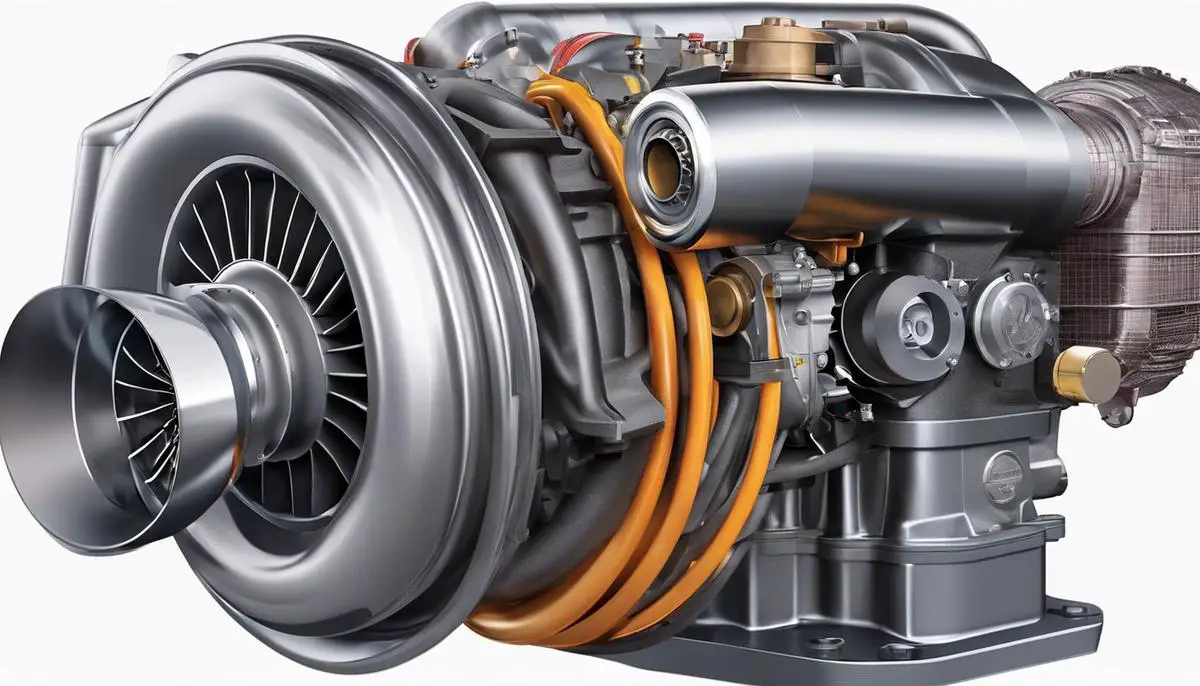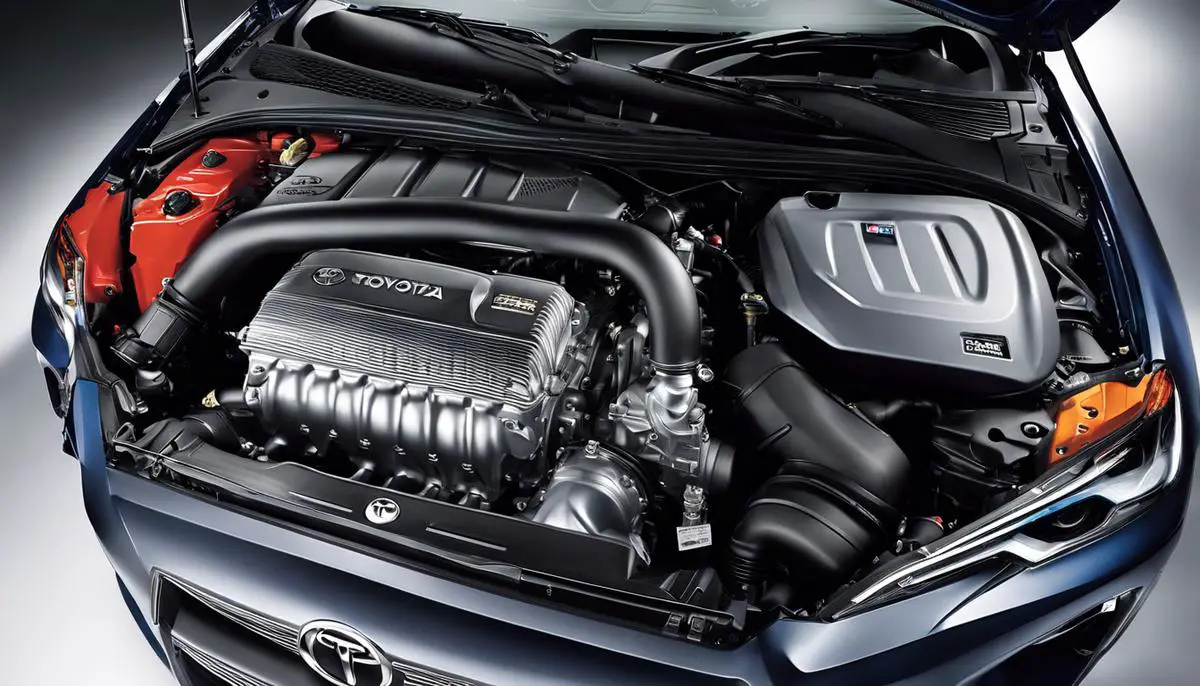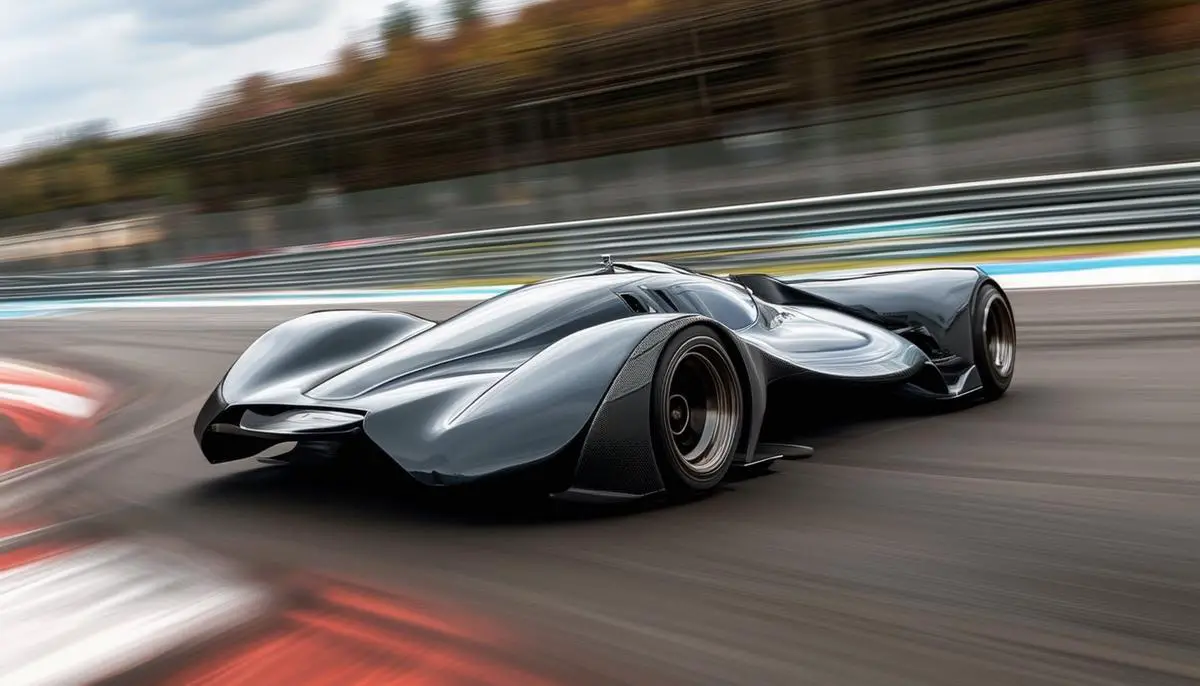Modern day advancements in automotive technology have resulted in a constant race to enhance the power and performance of engines. Among the most effective devices known for accomplishing this feat are turbochargers and superchargers – tools that might sounds complex, but the mechanics of which can be simplified for the layman’s understanding. By utilizing the principles of air compression, both turbochargers and superchargers serve to significantly amplify engine output. This essay will journey into the intriguing world of these power-boosting marvels, aiming to shed light on their operation, and the differences that set them apart in the way they function and deliver power.
Contents
Understanding Turbochargers
Turbocharger Magic: Revving Up Engine Performance!
There’s something electrifying about the roar of an engine, isn’t there? It’s a sound that gets every gearhead’s heart racing. However, it isn’t all about the sound; it’s also about the impressive bump in power that makes turbocharged engines a coveted addition for any serious car enthusiast. Yes indeed, we’re talking about the magic of turbochargers!
Turbochargers, while seemingly complex, operate on a fairly simple yet ingenious concept: more air equals more power. But what does that mean?
Engines produce power through a process called combustion, essentially the burning of air and fuel inside the engine. This reaction generates energy which pushes the pistons, transmitting that power through the drivetrain – vroom, off you go! To burn more fuel and hence produce more power, more air is needed. This is where the fantastic piece of machinery known as a turbocharger enters the fray.
A turbocharger compresses the air flowing into the engine, enabling it to squeeze in more air than a normal, or ‘naturally aspirated’, engine can. Therefore, a turbocharger allows the engine to burn more fuel per second, and create more power. Put simply, turbocharging equals greater efficiency and hence more engine power – an audacious leap forward in performance.
But, let’s dive even deeper to understand this fascinating mechanism a little better.
A turbocharger includes two main parts: a turbine and a compressor, connected by a shared shaft. The turbine is powered by the exhaust gases that exit your engine, and these gases spin the turbine. As the shaft connected to the turbine spins, it also spins the compressor, which draws in and compresses air, pushing it into the cylinders.
As the compressed air fills the cylinders, a larger amount of fuel can be added by the fuel injectors, leading to a more powerful explosion in the cylinder. Remarkably, all of this takes place in a split second and continues thousands of times per minute. The result? You guessed it- more power, or in technical terms, a significant increase in Horsepower and Torque.
Any negatives? Well, turbochargers do cause a phenomenon known as ‘turbo lag’. This is the time it takes from when you step on the gas until the turbocharger delivers the extra power. However, modern Turbocharger technology and design are continually evolving to mitigate this.
Ultimately, a turbocharged engine means you get to pack more punch in your ride – more effervescence, more acceleration, and indeed, more of that delightful engine roar!
So, there it is, the turbocharger demystified! It’s a wonderful invention that combines the forces of efficiency, sustainability, and performance. Consider turbochargers in your next engine upgrade and join the ranks of power-pursuit enthusiasts around the globe! From the starting line to the checkered flag, turbochargers deliver a thrilling boost of power when you need it most. Now, fire up that engine and feel the turbocharge!
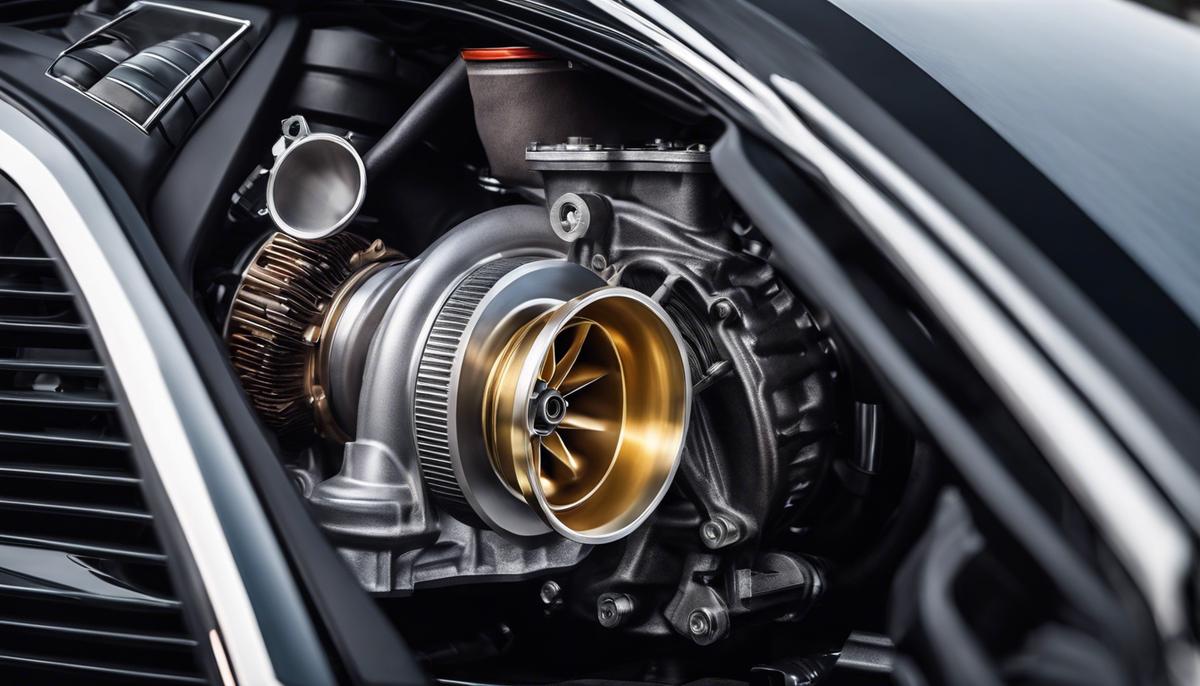
Understanding Superchargers
Rolling into the exciting world of vehicle power enhancements, let’s re-ignite the conversation by shifting gears to another star player of the scene: superchargers.
Superchargers, much like their cousin, the turbocharger, up the game by increasing engine power but the mechanism they employ and the way they impact the engine’s performance varies in some key ways.
To start the journey, it’s crucial to understand the basic principle of superchargers. Unlike turbochargers, which are exhaust driven, superchargers are engine-driven devices that gather power directly from the vehicle’s engine to force larger amounts of air into the combustion chamber. This direct connection to the crankshaft allows the supercharger to operate at the same speed as the engine, triggering an immediate response and increasing power at all ranges of engine RPM, alleviating the notorious “turbo lag” that sometimes plagues turbochargers.
The supercharger components, specifically the rotors, play a critical role in the process. There are three popular types of superchargers, each named for their unique style of rotors: Centrifugal, Roots, and Twin-Screw. Centrifugal superchargers use a compressor wheel, spinning at high speeds to draw in and compress air, whereas Roots and Twin-Screw superchargers use complex rotor designs to force air into the engine. The chosen type largely depends on the specific demands of the vehicle and unique preferences, as each possesses its own strengths and weaknesses.
When it comes to mechanism and functioning, superchargers exhibit a unique power rendering process. Drawing power directly from the engine via a belt that connects to the crankshaft, they spin up and compress air, packing more oxygen into the cylinder. This wealth of oxygen available can combust more fuel, making every stroke of your engine more powerful than before. This increase in airflow results in an increased amount of power generated by the engine, leading to the enhanced horsepower and torque, a smile-inducing, adrenaline-pumping feature that performance enthusiasts crave.
Yet, it’s not all about raw power. Superchargers also contribute to enhancing low RPM power, improving drivability in everyday situations. Furthermore, the absence of “turbo lag” offers a smooth and responsive power delivery that turbochargers sometimes lack.
The supercharger isn’t exempt from drawbacks, though. As it draws power directly from the engine, it can affect fuel efficiency. Ironically, the very freedom from turbo lag comes from increased demand on the engine, which can lead to higher fuel consumption. However, for performance enthusiasts who prioritize power and acceleration over fuel economy, superchargers are an exhilarating choice.
In conclusion, delving into the heart of the dynamics and mechanisms of superchargers unfolds a fascinating world of power enhancement. Whether supercharging or turbocharging, the choice boils down to personal preferences and specific vehicle demands. Superchargers offer a ready solution to turbo lag woes and promise a swift, immediate punch of power. Regardless of your chosen path, remember the journey towards power enhancement is always a thrilling one, packed with learning, discovery, and sheer joy of experiencing your engine’s boosted capabilities. Happy supercharging!
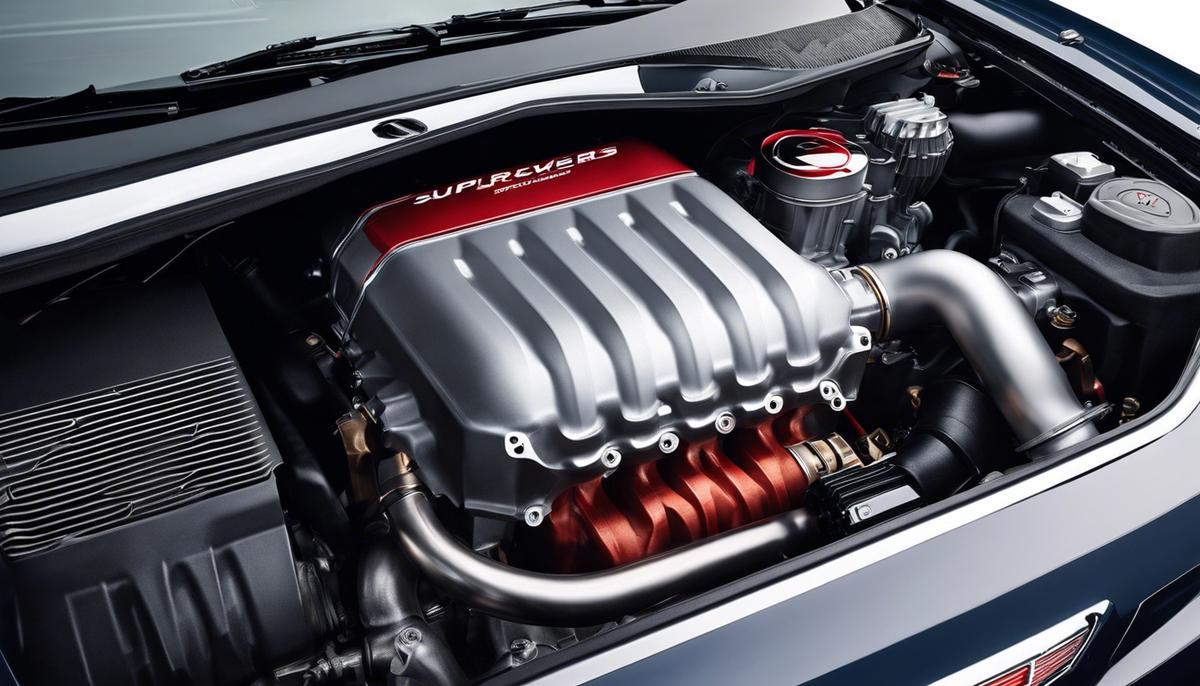
Comparison and Contrasting Turbochargers and Superchargers
As the saga of forced-induction systems continues, we turn the spotlight onto the thrilling phenomenon known as supercharging. Just imagine, while the turbocharger is powered by the exhaust gases, the supercharger dances to a whole different tune. It runs off the engine’s crankshaft, powered directly by the engine itself. This clearly carves a notable line of distinction between turbochargers and superchargers.
To understand superchargers, we delve into the types based on rotor design, namely, the Centrifugal, Roots, and Twin-Screw. While each type adds a unique flavor to engine power-ups, they all follow a central principle: they all force-feed the engine with air, which leads to more fuel entering the cylinders and, consequently, delivers an acceleration boost to set the pulses racing!
The roots type is the oldest and probably the simplest in design. Its ‘blower’ design has a legacy dating back to use in blast furnaces in the industrial revolution era! The twin-screw type provides more compression but adds complexity. The centrifugal type, on the other hand, is quite similar to turbochargers in design, but remember it’s still crankshaft-driven.
Likewise, superchargers also come with their delightful bouquet of benefits, apart from providing increased power straight off the blocks. How about an improved low RPM power? Or even a responsive power delivery? All these are hallmarks of a supercharged engine. If acceleration in the lower rev range is a worry, then the supercharger is your spirited answer!
However, life is a blend of highs and lows. The supercharger is no exception and has its caution tag attached. Being directly driven by the engine, superchargers tend to leach some power off the engine. This can mean a possible negative impact on fuel efficiency. However, the raw power output often compensates for this minor effusion.
Thus, the debate between turbocharging and supercharging can provide several rounds of engaging discussion. But at the end of the day, remember that there isn’t a ‘one-size-fits-all’ solution here. Your choice of a forced-induction system depends on your personal preferences, your driving habits, and the specific demands of your vehicle. Whether you crave for high-speed excitements or prefer the intoxicating pull of a low-RPM torque, there’s a solution available for you.
Round it up with a fine-tune and you will experience the real excitement and joy of power enhancement, whether in the form of a turbocharger or a supercharger. Remember folks, it’s not just about the push into the back of your seat, it’s the sensation and the thrill that you search for behind the wheel. Embrace the forced-induction universe and drive on toward a pulsating ride!
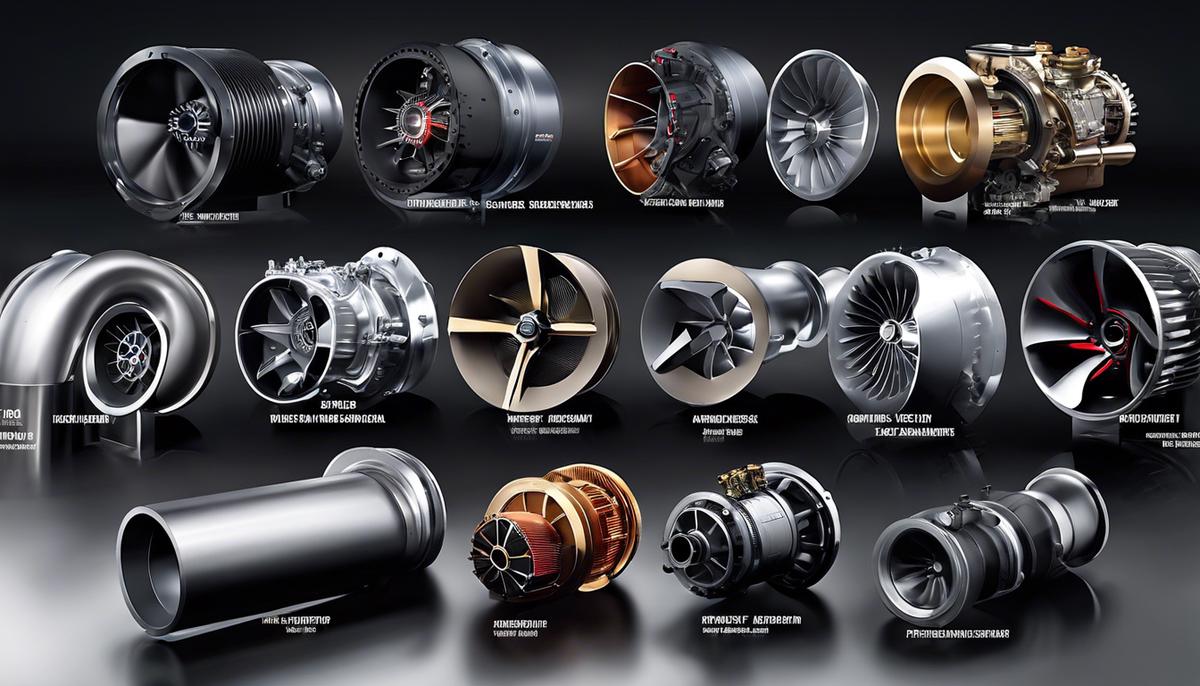
Every cloud has a silver lining, and so do the circumstances in which turbochargers and superchargers operate. Turbochargers might not deliver instantaneous power due to turbo lag, but they optimize the recycling of exhaust gases for improving efficiency. On the other hand, superchargers may take a toll on the engine’s power to drive their operation, yet reward with an immediate amplification of power. To sum it up, both these devices hold their own forte and are selected based on specific needs and driving conditions. They have undoubtedly revolutionized the automotive industry with their distinguished mechanics of amplifying engine performance, thereby adding a thrilling dimension to the driving experience.
